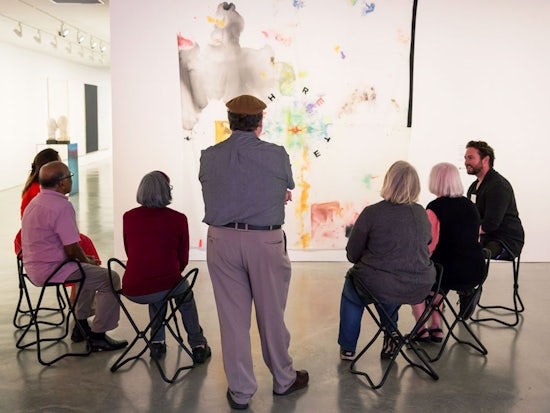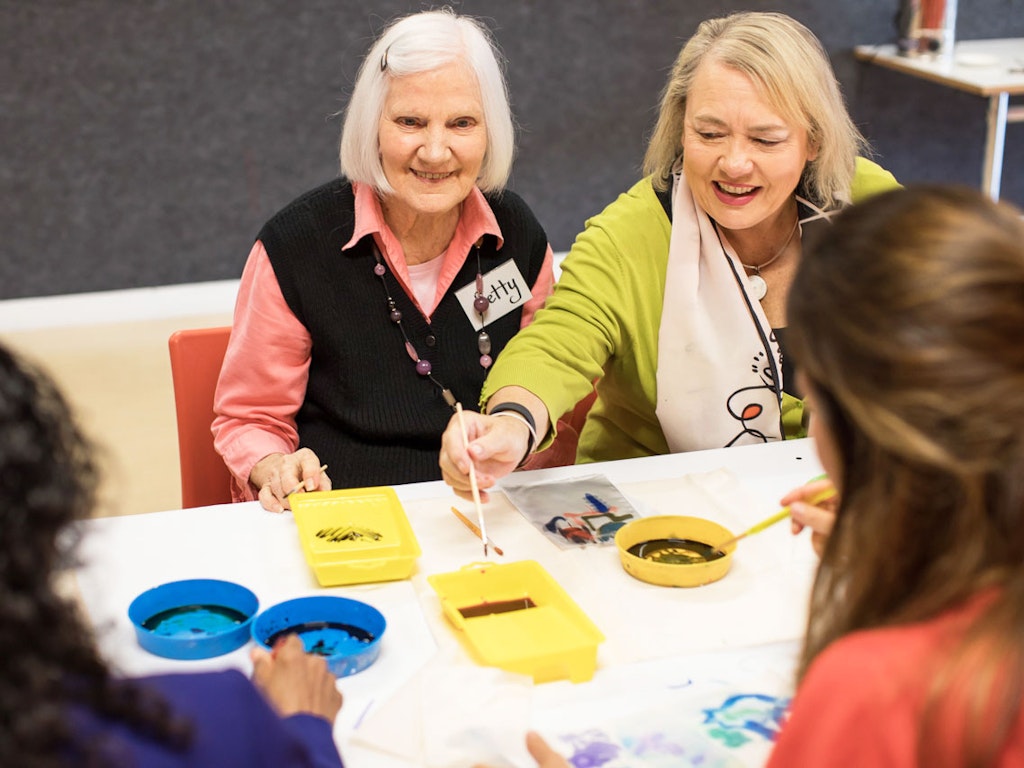Artful: a creative approach to dementia research
How does art impact the wellbeing and neuroplasticity of individuals with dementia? The Brain and Mind Centre’s Healthy Brain Ageing Clinic and The Museum of Modern Art have teamed up to tackle exactly that question.

A new study records the effect of creative engagement on functions such as visuospatial skills and memory skills (Photo: Daniel Boud)
“Artful” is a free, 10 week creative art program in which people with dementia find their own meanings and connections to contemporary art by viewing, painting, sculpting and drawing in group sessions with Artist Educators.
However, it is also a 3 year research initiative spearheaded by the Brain and Mind Centre, in collaboration with University of Sydney and Alzheimer’s Australia NSW, exploring how art affects the neuroplasticity of people living with dementia.
Dementia has long been studied through Artistic programs, but previous research has generally focused only on how viewing art affects the wellbeing of patients.
This study will instead formally assess participant’s brains’ at the beginning and end of the program, to record the effect of creative engagement on functions such as visuospatial skills and memory skills that are commonly weakened by dementia.
Participants are asked what emotions, memories and words the artwork they view evokes in them, before being given the opportunity to participate in a hands on workshop, creating art in reaction to their viewing experience, activities designed to encourage creative thinking and stimulate lateral thought.

Michelle Heldon, the Art and Dementia coordinator at the Museum of contemporary art, said in a video about the program that they “see people being able to engage physically as another step to the creative process.”
Recent discoveries which found that much of the risk for developing
dementia are due to things we can modify through neuroplasticity, or the
brain’s ability to grow and change neural pathways, have led scientists
to believe that exercise may be able to “wake up” brains affected by
dementia.
Professor Sharon Naismith of the Brain and Mind Centre, says the
physical aspect of the program “must be doing something in terms of
actually using parts of the brain that otherwise wouldn’t be used by
just viewing artwork.”
While it will be about a year before the scientific results are in,
Ms Heldon believes Artful is already having an effect by bringing
people out of their shell.
One carer said that her father “became more engaged as the program
went along,” eventually starting to begin projects by himself.











![The new Aged Care Act exposure draft is slated for release in December of 2023, but advocates hope to see it rolled out on January 1, 2024. [Source: Shutterstock]](https://agedcareguide-assets.imgix.net/news/articles/wp/agedcareact__0811.jpg?fm=pjpg&w=520&format=auto&q=65)












Comments